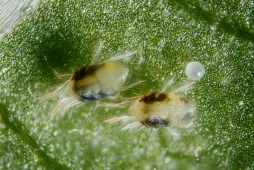Cordyline indivisa, a cordyline with large leaves
Often mistaken for a palm or a Dracaena, Cordyline indivisa deserves to be recognized for its true value. This plant of the Asparagaceae family, native to New Zealand, is distinguished by its large size and immense, colorful leaves.
How to recognize Cordyline indivisa?
Cordyline indivisa is an upright tree that can reach a height of ten meters in its natural habitat. In our latitudes, it rarely exceeds two meters.
The trunk measures up to 80 centimetres in diameter. It is branched at the top and bears leaf scars on the underside. These marks are left by falling leaves.
The green leaves have a red midrib and a glaucous-green underside flecked with blue. They grow in clumps at the top of trunks or branches. Larger than cordyline stricta, they are one to two meters long and ten to 30 centimeters wide. With their tapered shape and pointed apex, the leaf blades resemble sharp blades.
The star-shaped white flowers are grouped in dense panicles. Highly melliferous, they give off a sweet fragrance.
The inflorescence then gives rise to blue berries.
Cordyline indivisa is reputed to be non-toxic. However, it's best to keep the plant out of the reach of your pets. It contains saponins, a substance that causes vomiting and diarrhea if ingested.
Our maintenance tips
Cordylines indivisa like the sun. But they can't stand the hottest rays. Variegated varieties are particularly sensitive. Keep this in mind when setting up your plant in its final location.
Watering
Water the base of your cordyline indivisa when the soil is about three centimeters dry. Your plant likes rainwater, but will also tolerate mains water.
Don't let water stagnate in the planter or saucer. It will rot the roots.
Repotting
In spring, transfer your Cordyline indivisa to a larger pot, so that it can continue to grow.
Obtain a pierced pot larger than the root ball. Choose a terracotta model. This material optimizes drainage and limits the risk of root rot in the event of excess water.
Fill the bottom with clay balls or gravel.
Then add a layer of universal or Mediterranean potting soil. Plant your Cordyline indivisa in the center. Fill in with substrate. Do not bury the collar.
Tamp and water to remove air bubbles. You can mulch the base with a mineral material to keep the soil cool.
Fertilization
You can stimulate the development of your plant during its growth phase, in spring and summer, with fertilizer.
To promote the growth of your Cordyline indivisa, feed the plant with a liquid green plant fertilizer diluted in the water.
You can stimulate the growth of your plant during its growth phase, in spring and summer, with fertilizer.
Put compost at the foot of your Cordyline indivisa to stimulate its growth.
Prune
Cut off yellowed leaves at the base. Use a clean, sharp instrument to prevent the spread of disease.
Plantation
Once the last spring frosts have passed, you can plant.
Choose a location sheltered from the wind. The location must be sunny. But, if you live in a region where the sun is scorching in summer, avoid a south-facing exposure.
While the rootball of your Cordyline indivisa is soaking, dig a hole three times as big. Line the bottom with river sand, pebbles or gravel to improve drainage.
Mix equal parts garden soil and universal potting soil. Add a layer of substrate.
Plant your plant. The rootball should be level with the ground and the collar should not be buried. Fill in with your mix of potting soil and garden soil.
Water generously and mulch with crushed slate or gravel. This mineral mulch keeps the soil cool in summer and protects it from the cold in winter.
Cutting
Cutting is carried out during the strong growth phase, generally in spring and early summer.
Locate one of the young shoots that has formed at the foot of the main plant. Take care to remove it with its roots.
Plant your cutting in a pierced pot lined with potting soil for seedlings and plantations. Spray the substrate with non-calcareous water.
The graft takes better in a stifled environment. Cover the plant with a translucent plastic bag or cloche.
Place your young plant in a bright room where the temperature is between 20 and 25°.
The appearance of new leaves indicates that your cutting is taking root.
Diseases / Threats
Information
| Family | Asparagaceae - Asparagaceae |
| Type | Cordyline - Cordyline |
| Species | Cordyline indivisa - Cordyline indivisa |
| Lifecycle | Perennial |
| Foliage | Evergreen |
| Exposure | |
| Substrats | |
| Planting methods |
Open ground In pots In tubs |
| Category | |
| Tags |
Beginner Rustic |
| Origin |
Oceania |
| Hardiness (USDA) | 8a |
| Leaf color |
|
| Flower color |
|
| Fruit color |
|
Discover plants from the same family
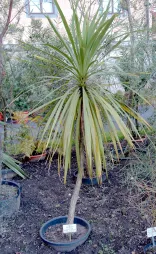
Cordyline australe
Discover
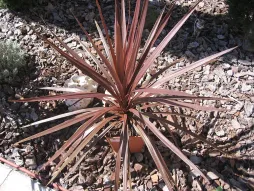
Cordyline 'Red Star
Discover
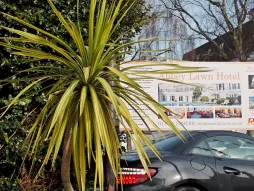
Cordyline 'Torbay Dazzler'
Discover
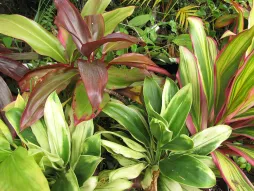
Cordyline fruticosa
Discover













